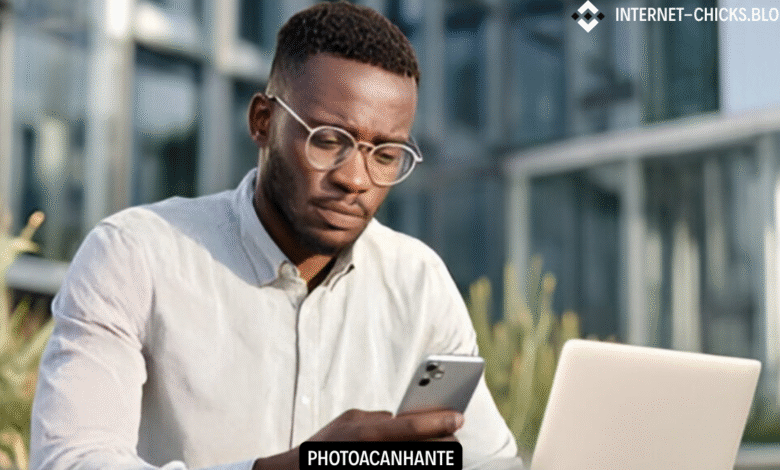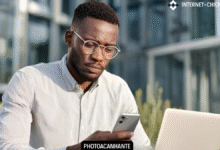Photoacanhante: Everything You Need to Know About This Unique Concept

Introduction to Photoacanhante
The word photoacanhante may not be a household name yet, but it’s quickly gaining attention among creative communities, tech enthusiasts, and online explorers. At first glance, the term itself feels mysterious, like it belongs to a futuristic project or a cultural movement. However, it’s more than just a trendy buzzword. It represents a novel blend of imagination, art, and the modern obsession with how images shape our lives.
In the digital era, visuals dominate almost every interaction. From social media feeds to virtual reality environments, the power of images goes far beyond simple aesthetics. Photoacanhante is a word that has started to embody this evolution—a way of looking at photos not just as static visuals but as experiences that spark thought, emotion, and connection.
This article delves into the world of photoacanthine: what it means, where it comes from, how people use it, and why it’s becoming such a significant keyword in online conversations. If you’re curious, buckle up—we’ll unpack this idea layer by layer, blending cultural analysis with practical insights.
The Origins and Meaning of Photoacanhante
Every unique term has a backstory, and photoacanhante is no different. While its roots aren’t found in mainstream dictionaries, the word seems to have emerged from a mix of linguistic creativity and online experimentation. Its structure suggests a hybrid origin—“photo” pointing to imagery, light, or photography, and “acanhante,” which carries undertones of subtlety, humility, or something intriguing.
When words like this appear in digital culture, they often begin as niche concepts before evolving into popular trends. Some experts believe that photoacanhante started in smaller online communities, where people were searching for a way to describe images that felt beyond ordinary. It wasn’t just about looking at a photo; it was about the feeling of being drawn into it, almost like the image itself was shy yet powerful.
The beauty of such terms lies in their flexibility. Photoacanhante doesn’t have to be tied down to one rigid definition. Instead, it floats between meanings, adapting to different contexts and speaking to other people in various ways. This adaptability is part of why the term is gaining traction—it’s a concept that everyone can interpret and apply in their own unique way.
Photoacanhante in the World of Photography
For photographers, photoacanhante can represent a style of capturing moments that feel intimate yet impactful. Imagine a portrait that doesn’t scream for attention but quietly captivates you, holding your gaze longer than expected. That’s the essence of what many describe as a photoanachronism moment.
Photography trends have always reflected cultural moods. In the early days, it was about documenting reality. Later, it evolved into a focus on stylization and aesthetic perfection. Today, with the rise of candid photography, authentic storytelling, and minimal editing, photoacanhante finds its place as a description of subtle visual power. It’s not about the flashiest composition but about the understated details that linger in memory.
Professional photographers might use the term to brand their work or style, while amateurs might use it to describe a photo they stumbled upon that made them pause. Either way, it gives language to an experience many have felt but couldn’t quite describe before.
The Digital Culture Behind Photoacanhante
The internet has always been fertile ground for new words, and photoacanhante fits neatly into this tradition. Just like “aesthetic,” “vibes,” or “mood boards” have become cultural shorthand, photoacanhante is slowly carving out its space as a marker of digital identity.
Platforms like Instagram, Pinterest, and TikTok thrive on visuals. Users are constantly seeking fresh ways to describe their content, and old terms start to feel overused. That’s when words like photoacanhante come into play—they provide novelty and allow people to express themselves differently. In a way, the rise of such keywords is part of a larger linguistic evolution where internet culture pushes boundaries.
More than just a word, photoacanhante has become a tag, a hashtag, and even a way of categorizing visual aesthetics online. Communities that embrace it often create content that is softer, introspective, and layered with meaning, proving that language can give shape to how we interact with images.
Why Photoacanhante Resonates with People
One reason photoacanhante resonates so deeply is because of the universal connection humans have with images. Our brains are wired to process visuals faster than text, and photos often strike emotional chords before we’ve even had a chance to analyze them. But what makes a photo stand out isn’t always obvious—it’s not always about clarity or high definition. Sometimes, it’s the subtle imperfections or the quiet details that make a picture unforgettable.
That’s where photoacanhante steps in. It embodies the charm of the understated—the feeling you get when you stumble upon an old family photo, or when a casual snapshot captures an unplanned but meaningful moment. It’s about resonance, not perfection. It’s about those moments that we all experience and can relate to.
People today crave authenticity. Glossy, over-edited images no longer feel as powerful as they once did. Photoacanhante seems to be a response to this cultural shift, reminding us that beauty doesn’t always have to shout; sometimes it whispers.
Photoacanhante as a Lifestyle Aesthetic
Beyond photography and digital culture, photoacanhante has started to morph into a broader lifestyle aesthetic. Just as terms like “minimalism” or “boho” evolved from design concepts into lifestyle choices, photoacanhante is moving in a similar direction.
Think of it as living in a way that values subtle beauty. It might mean choosing muted colors in fashion, opting for simple home décor with meaningful accents, or seeking experiences that feel personal rather than performative. The word carries an aura of quiet sophistication, appealing to people who prefer depth over surface-level glamor.
Lifestyle influencers are already experimenting with this aesthetic, using the term to describe curated spaces, travel photography, and even wellness practices. The more it spreads, the more likely it is to become a recognized cultural marker in its own right.
The Business Potential of Photoacanhante
Whenever a fresh keyword gains traction online, businesses take notice. Photoacanhante is no exception. Brands that deal with photography, lifestyle products, or creative content may find it helpful to incorporate the term into their marketing strategies.
Imagine a boutique launching a “Photoacanhante Collection” of clothing inspired by natural tones and organic fabrics. Or a photography studio branding its packages with the word to emphasize authentic, emotional captures rather than staged shoots. Even tech companies could adopt it for apps that deal with photo filters or memory preservation.
The business potential here lies in its novelty and emotional weight. People are drawn to words that feel personal, and photoacanhante carries that elusive charm. It’s easy to imagine it evolving into a recognizable brand identity if positioned correctly.
How Social Media Has Amplified Photoacanhante
If you want to track the rise of photoacanhante, look no further than social media. Hashtags have always been powerful tools for spreading ideas, and this word is no different. Early adopters began using it to label their content, and soon it gained traction with communities seeking something new.
What’s particularly interesting is how the word bridges cultural gaps. Unlike technical jargon, photoacanhante is flexible and intuitive. Someone in Brazil might use it differently from someone in Europe or Asia, yet the shared feeling behind it connects users globally.
Social media also thrives on slightly mysterious trends. When people see an unfamiliar word like photoacanhante, they’re curious to click, learn, and perhaps adopt it themselves. This curiosity-driven sharing has amplified its reach far beyond niche circles.
The Psychology Behind the Concept
From a psychological standpoint, photoacanhante taps into the human need for meaning-making. Photos aren’t just pixels—they’re emotional triggers. When someone describes a photo as photoacanhante, they’re often expressing a personal reaction that goes beyond the image itself.
This reaction can be linked to nostalgia, awe, or even tranquility. It’s a reminder that visuals carry hidden layers, and language helps us surface those layers. By naming the experience, we make it easier to share and connect with others who feel the same way.
Psychologists might argue that photoacanhante is part of a broader trend where digital culture is shaping emotional vocabularies. Just as emojis added nuance to text communication, words like photoacanhante add nuance to visual communication.
Challenges and Criticisms
Of course, not every new term is universally embraced. Critics argue that photoacanhante is just another internet fad, destined to fade as quickly as it rose. They point out that without a clear, fixed definition, it risks becoming meaningless over time.
There’s also the challenge of commercialization. Once brands latch onto a word, it often loses its raw, authentic charm. People who used it in intimate contexts might feel alienated when they see it plastered across advertising campaigns.
Still, these criticisms are part of the natural life cycle of cultural terms. Some fade, while others evolve and adapt. Whether photoacanhante survives in the long run depends on how communities continue to use and shape it.
The Future of Photoacanhante
Looking ahead, the future of photoacanhante seems promising. As long as people crave ways to describe their relationship with images and aesthetics, the word will have relevance. It may evolve into a niche cultural movement, a business brand, or even a widely accepted artistic term.
The interesting part is that its future isn’t predetermined. Unlike established words, its open-ended nature means communities will decide what it becomes. That flexibility gives it longevity in a digital culture that thrives on constant reinvention.
If anything, photoacanhante highlights the fact that our relationship with images is still evolving. Just as photography changed the way we see the world centuries ago, words like this reflect how we continue to process and reinterpret visuals in the modern era.
Frequently Asked Questions (FAQs)
1. What does “photoacanhante” mean?
Photoacanhante is a modern term that blends photography with the idea of subtle, understated beauty. It’s often used to describe images or aesthetics that feel intimate, emotional, and quietly captivating rather than loud or flashy.
2. Is photoacanhante a photography style?
Yes and no. Some photographers use it as a style label to describe their work, while others see it as more of an aesthetic or emotional reaction to certain types of images. It’s flexible and can mean slightly different things in different contexts.
3. Where did the word photoacanhante come from?
The exact origin isn’t clear, but it seems to have emerged from online communities experimenting with new ways to describe visual culture. The word combines “photo” with a root that suggests subtlety or shyness.
4. Can brands use photoacanhante for marketing?
Absolutely. Because the word carries novelty and emotional depth, businesses in the photography, fashion, and lifestyle sectors can utilize it to create unique branding and connect with audiences seeking authenticity.
5. Will photoacanhante become a mainstream trend?
It’s hard to say for sure, but the term has strong potential. If online communities continue to use it and brands embrace it carefully, it could very well grow into a recognized trend in photography and aesthetics.

